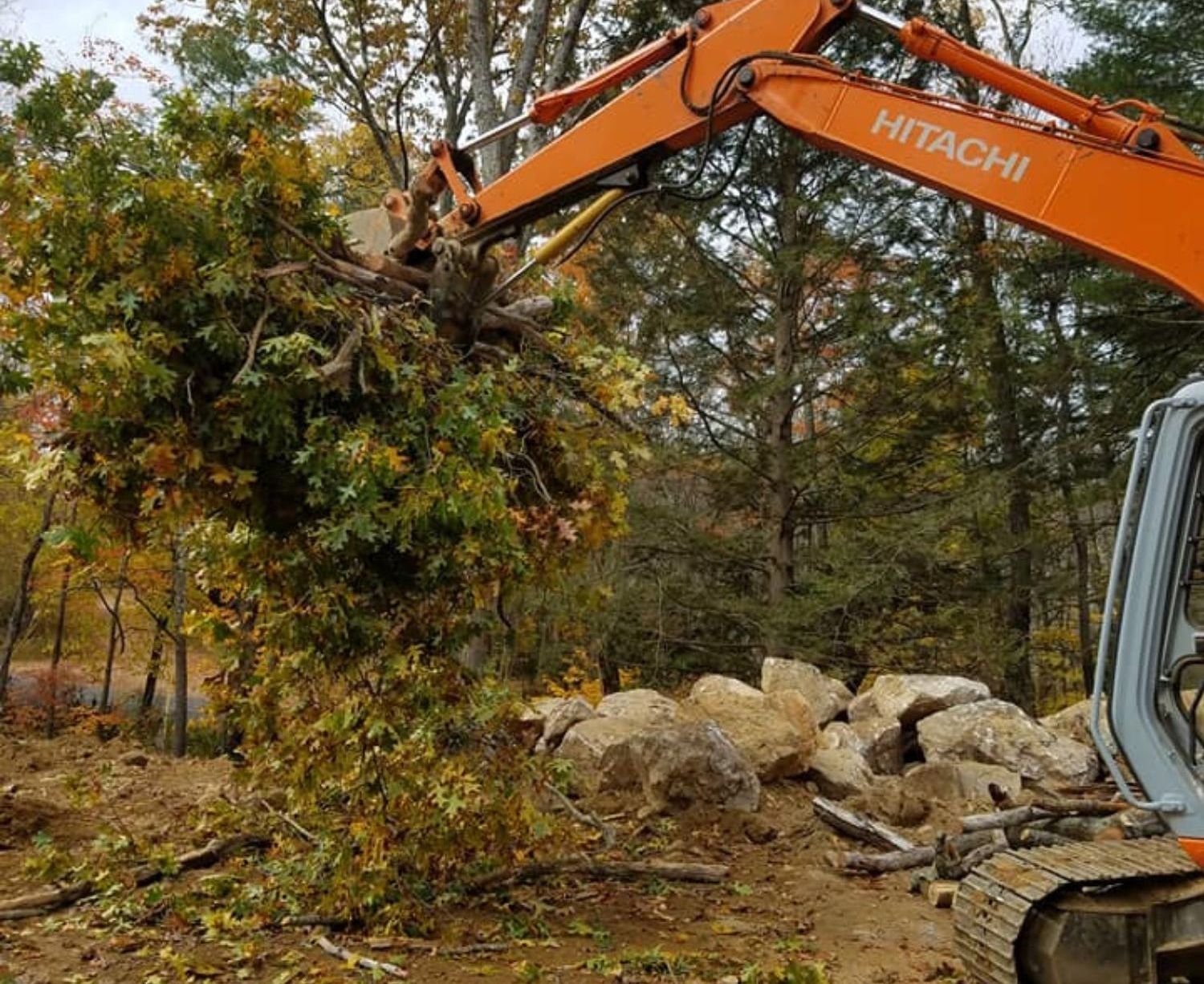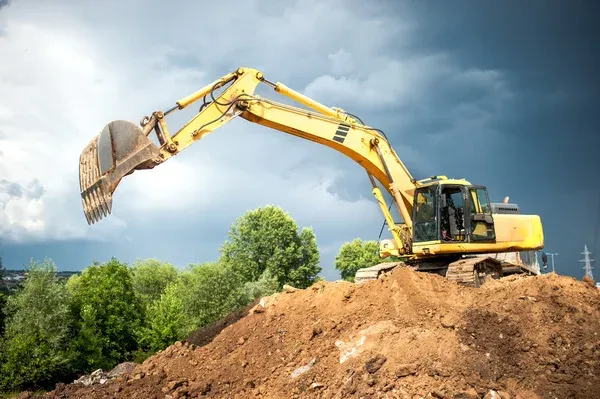Choosing the Right Excavation Method for Your Property in Massachusetts
The Proper Guide for Your Excavation Project

Excavation is a crucial step in any construction or landscaping project, and choosing the right excavation method is essential for the success of your Massachusetts property endeavor. The diverse topography and soil conditions across the state demand careful consideration to ensure the excavation aligns with the project's goals, environmental regulations, and safety standards. In this comprehensive guide, we will delve into the various excavation methods suitable for Massachusetts properties, offering insights to help you make informed decisions that contribute to the overall success of your project.
I. Understanding Massachusetts Soil Types:
Massachusetts boasts a variety of soil types, ranging from sandy loams to heavy clay soils. Before selecting an excavation method, it is vital to conduct a soil analysis to determine the soil's
composition, moisture content, and load-bearing capacity. This information will guide your choice of equipment and excavation techniques, ensuring optimal results for your specific soil conditions.
II. Common Excavation Methods:
Traditional Open-Cut Excavation:
· Ideal for larger projects such as foundation excavation and utility installations.
· Requires the removal of surface vegetation and soil to access the desired depth.
· Suitable for projects where the excavation site is easily accessible and there are no significant space constraints.
Trenching:
· Commonly used for laying utilities, such as water lines, gas pipes, and electrical conduits.
· Involves digging narrow and deep trenches with specialized equipment.
· Efficient for projects that require a linear excavation approach.
Grubbing and Stripping:
· Focuses on removing vegetation, rocks, and topsoil to prepare the site for further excavation.
· Essential for creating a clean and level working surface before more intensive excavation activities.
· Helps in preventing soil erosion and promoting stable construction foundations.
Hydrovac Excavation:
Utilizes pressurized water and vacuum technology to safely excavate soil. Particularly beneficial in urban areas with utility congestion, minimizing the risk of damaging underground infrastructure. Ideal for precision excavation around sensitive structures.
III. Site-Specific Considerations:
Urban Excavation:
· Discusses the challenges and considerations of excavation projects in urban environments, including limited space, utility congestion, and permitting requirements.
· Highlights the importance of precision and safety in densely populated areas.
Suburban and Rural Excavation:
· Explores excavation considerations for suburban and rural properties, including land size, environmental impact, and local zoning regulations.
· Discusses how different excavation methods can be tailored to meet the specific needs of these settings.
IV. Environmental Impact and Regulations:
Conservation and Wetland Areas:
· Examines the impact of excavation on conservation and wetland areas, emphasizing the need for compliance with environmental regulations.
· Discusses eco-friendly excavation practices and mitigation strategies to protect sensitive ecosystems.
Stormwater Management:
· Addresses the importance of proper excavation in stormwater management, preventing erosion, and maintaining water quality.
· Discusses best practices for excavating near water bodies and complying with stormwater regulations.
V. Safety Considerations:
OSHA Guidelines:
· Highlights Occupational Safety and Health Administration (OSHA) guidelines for excavation safety.
· Emphasizes the importance of protective systems, soil analysis, and employee training to ensure a safe working environment.
Utility Locating:
· Stresses the significance of accurately locating and identifying underground utilities before excavation.
· Discusses the use of utility locating services and technologies to prevent accidents and disruptions.
VI. Equipment Selection:
Excavators:
· Explores different types of excavators and their applications, including mini excavators, backhoes, and trackhoes.
· Discusses considerations such as size, reach, and attachment options for optimal equipment selection.
Trenchers and Diggers:
· Examines specialized equipment like trenchers and diggers for projects requiring narrow and deep excavations.
· Highlights the efficiency and precision of these machines in specific applications.
Hydrovac Trucks:
· Discusses the benefits of hydrovac trucks in excavation projects, particularly in areas with utility congestion.
· Explores how hydrovac technology enhances safety and reduces the risk of utility damage.
VII. Case Studies and Success Stories:
Residential Excavation:
· Presents a case study illustrating the excavation process for a residential property in Massachusetts.
· Discusses challenges, solutions, and the impact of the chosen excavation method on the project's success.
Commercial and Industrial Excavation:
· Explores a commercial or industrial excavation project, highlighting the scalability and complexity of excavation methods in larger settings.
· Discusses how equipment selection and planning contribute to efficient outcomes.
VIII. Cost Considerations:
Budgeting for Excavation:
· Offers insights into budgeting considerations for excavation projects, including equipment costs, labor expenses, and potential unforeseen challenges.
· Discusses how careful planning and informed decision-making can help control costs.
IX. Choosing the Right Excavation Method: A Step-by-Step Guide:
Assessing Project Requirements:
Provides a step-by-step guide for assessing project requirements, including depth, soil conditions, and environmental considerations. Assessing project requirements for excavation involves a meticulous examination of factors like required depth, soil conditions, and environmental considerations. This crucial step ensures informed decision-making, guiding the choice of the most suitable excavation method and equipment tailored to the unique needs of the project and the Massachusetts property in question.
Evaluating Equipment Options:
Guides readers through the process of evaluating different excavation equipment options based on project specifications and site characteristics.
Considering Safety and Compliance:
Emphasizes the importance of safety and compliance in the decision-making process, providing a checklist for ensuring a secure excavation environment.
Environmental Impact Assessment:
Discusses the need for an environmental impact assessment, including considerations for conservation areas, wetlands, and stormwater management.
Seeking Professional Advice:
Encourages readers to seek professional advice from excavation experts and consultants. Discusses the benefits of partnering with experienced professionals for successful project outcomes.
Choosing the right excavation method for your Massachusetts property is a multifaceted decision that requires careful consideration of soil conditions, project goals, environmental impact, and safety standards.
By understanding the various excavation methods available, assessing site-specific
considerations, and adhering to regulations, property owners and project managers can ensure a successful excavation process that lays the groundwork for construction or landscaping endeavors. Whether navigating the challenges of urban environments, preserving natural habitats, or maximizing safety, this comprehensive guide aims to empower decision-makers with the knowledge needed to choose the optimal excavation method for their unique Massachusetts property projects.
You might also like
Book a Service Today
We will get back to you as soon as possible
Please try again later
Quick & Reliable
Prompt, Dependable, Prepared – Anytime, Any Service!
Location
Call
All Rights Reserved | Groundscapes Inc. | Website Managed by Leads By Vinny



